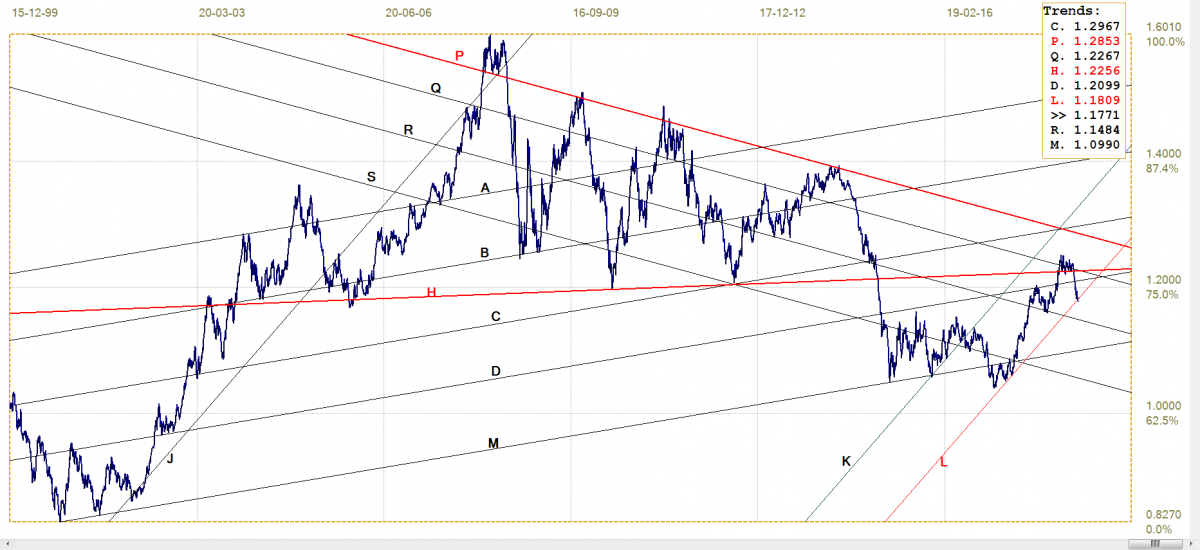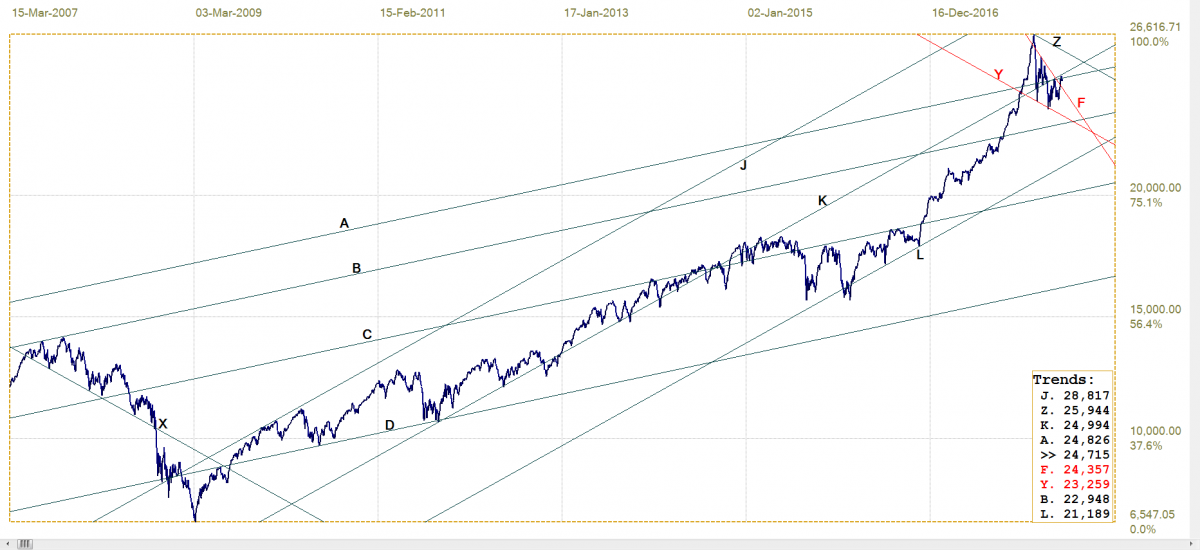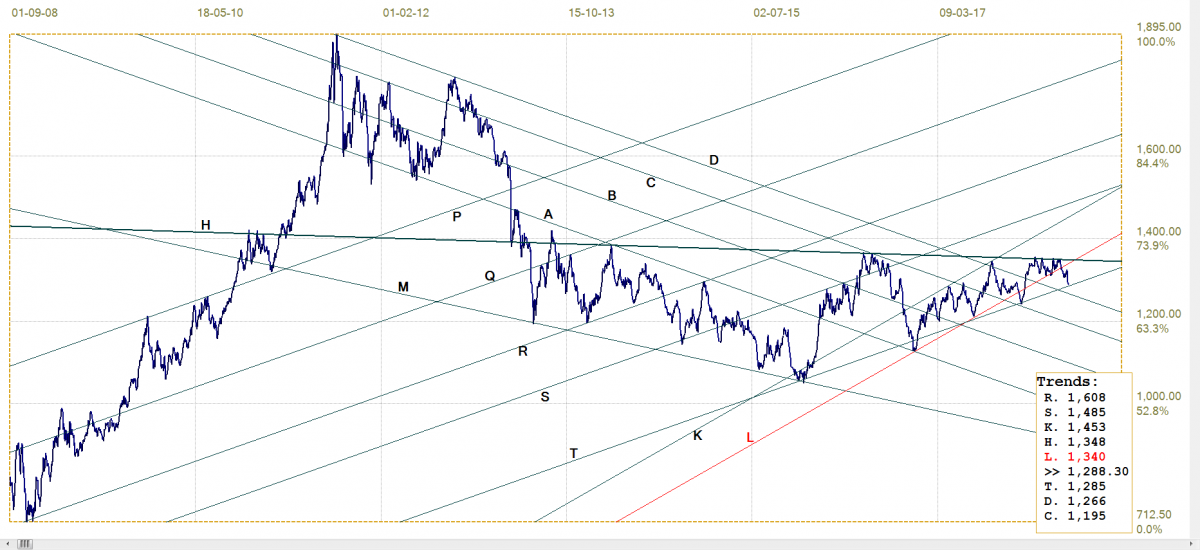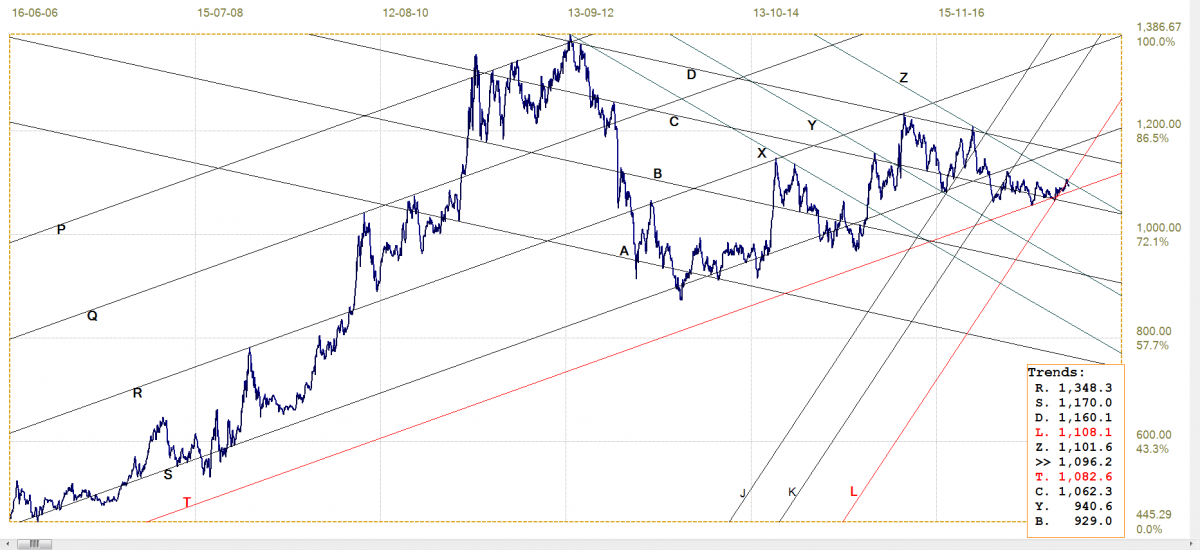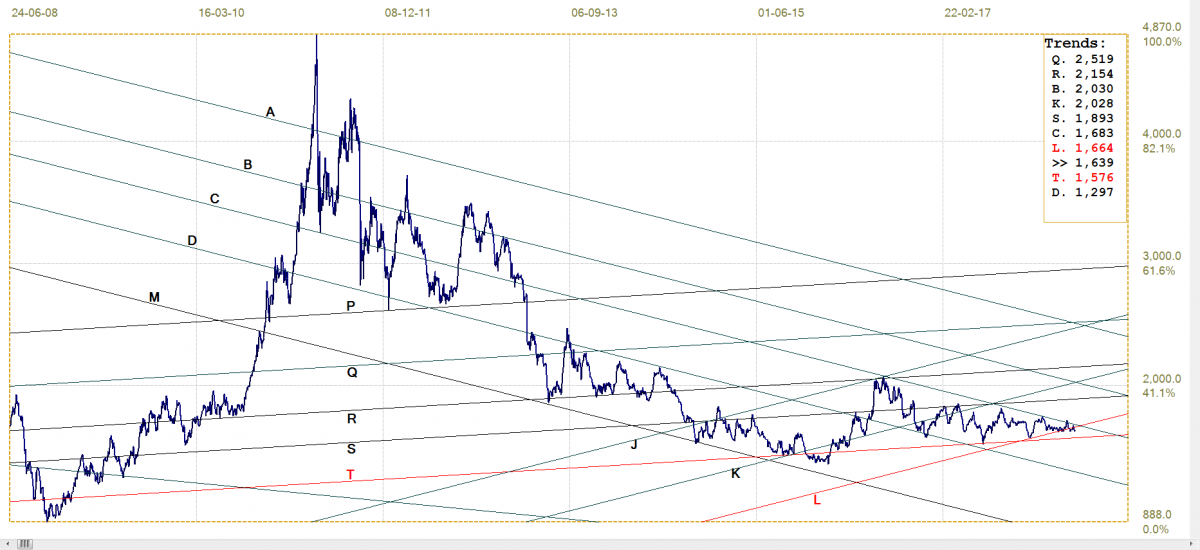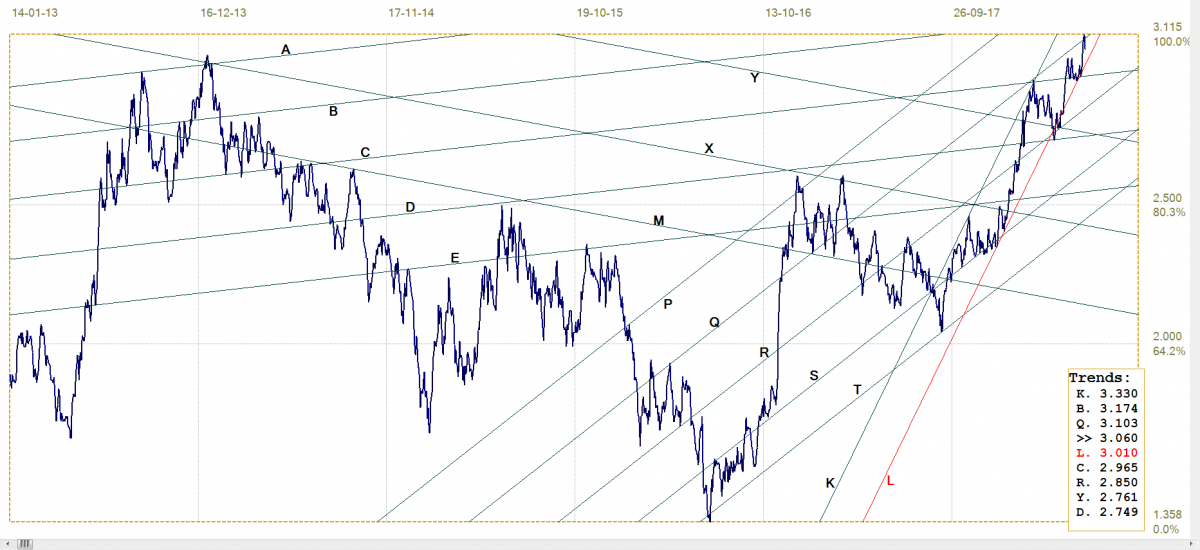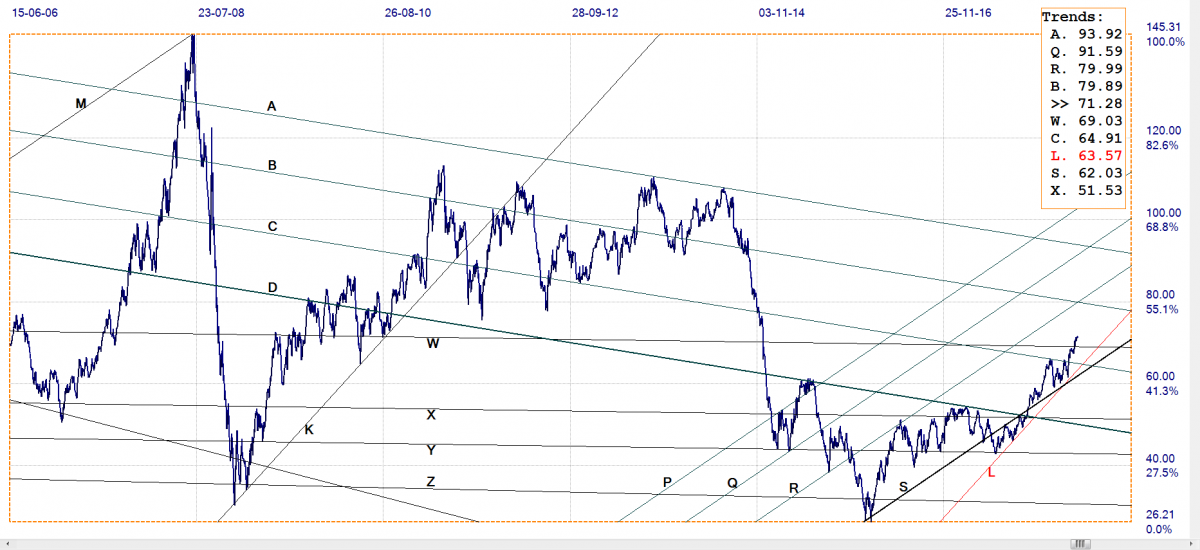Still The Month Of May
A bit longer than a week to go! However, the quiet times can be very deceiving. As the analogy of a deep river that was used recently suggested, while the surface may appear placid with only small ripples to show movement, there could be strong currents down below. Superficially, the markets are mostly treading water, with little real action in either direction, but that placidness conceals trends that will change and disrupt the ‘every new day is similar to the day before and just like the one last week’ world we live in at the moment and have been for some time.
While it is so quiet, there is not much to write about - and if one writes about all the stuff under the surface that are waiting to burst out, the general reaction is one of ‘if things are so very bad, they would have erupted a long time ago; life is good’. Of course, afterwards, just as happened post 2007/8, the experts tell us nobody could have seen it coming. Really?
Will the experts reach a similar consensus after the collapse that is building up and crashes down in 2019, 2022 or 2025 and they meet to discuss why it had happened and why they were so surprised when it did happen? Stein’s Law is often quoted here; the one that says, “If something cannot continue indefinitely, it will stop.” This Law applies to the idea that has been so popular for many decades, that it is possible to fix financial or economic problems by taking on more debt.
Another economic law that has been often quoted since the mid-1800s is as simple as Stein’s Law, but just as valid. “There is no such thing as a free lunch”. The people of most western countries have been living the past two decades or so, if not much longer, as if free lunches are provided daily by the banks and funded by the government. How will they react when at some time in the not too distant future the bill is presented?
There are many different triggers that could ignite a widespread economic collapse – probably not this week or next month – but something will happen to start it all off. It most probably will not be directly related to the diverse factors that really are the true causes of the overall condition that lead to a collapse. Bad mortgages carry the blame for 2007/8, but nobody really points fingers at regulatory failures as one cause of that problem or, even more removed, an ‘easy money and (almost) every American should own a house’ policy of an administration that was driven by the maniacal need to achieve high economic growth at all costs, come what may.
Today there are two main factors at work that hollow out the US economy and limit its ability to show sustained long term growth. The first is often mentioned here: A hedonic CPI that might well be, when properly done, a measure academics can find useful to discount the cost of living for a higher standard of living made possible by innovation and the use of technology. However, this CPI becomes an economic disaster when it is almost criminally used by employers as ‘the index of changes in the real cost of living’ to set wage and salary increases for working households.
These households have become consistently more impoverished for 20 years now, to result in 80% of US households being 20% and more worse off in 2016 than they were in 2007. That trend continues as long as the hedonic CPI is used as a cost of living index. Corporations are happy; it is good for the bottom line if they are able to increase prices without these being reflected in higher employee cost.
The other major factor is the sustained increase in the amount of debt carried by government in all its forms, by corporations who borrow very cheaply to buy back stock, thus to ensure bigger bonuses for top management and by households which require more credit to try and sustain their standard of living, or even to survive.
These two main trends of at least the past two decades are still intact. That means the dates quoted above are just guesses, but the fact that a collapse is coming unless there is a drastic and traumatic change in these trends remains in place. It would not surprise me if the first definite and incontestable signs of the coming collapse become visible to many people as early as this year. The volatility on Wall Street and the yield on the US 10-year above 3% could be early warnings that a breaking point is not too far off.
Euro-Dollar
Euro-dollar, last = $1.1771 (www.investing.com)
Three weeks ago, the euro found firm support at the bottom of bull channel KL ($1.1809), then rebounded steeply higher as if resuming the rising trend. That rally lasted just one week and now the euro is back to testing the support at line L.
The new week that lies ahead is therefore again quite important for the future of the euro and, of course, the US dollar. It all depends on whether renewed weakness for the dollar will enable the euro to rebound higher yet again, or whether the dollar recovery continues, with the euro breaking below the bull channel to extend the new bear trend. Whichever happens, the technical picture indicates that it should set the trend for the currencies for probably the medium-term.
DJIA
DJIA, Last = 24715.09 (money.cnn.com)
There are two conflicting technical signal is the analysis. Firstly, the DJIA has now broken clear of pennant YF (24 357) at the end of its fifth leg within the pennant – in line with what happens with most pennants. This is a bullish sign as pennants are known as continuation patterns.
Yet the DJIA reached line K (24 994) and reversed lower, as if the break from the pennant was only an attempt to give a goodbye kiss on line K before resuming the bear trend. It should not take too long for the market to distinguish between these two possibilities, either by breaking above line K or reversing lower, perhaps even breaking back in pennant YF.
If the former, a new all-time high can be expected in due course; if the latter, the DJIA should then soon move lower out of the broad sideways range of the past few months to resume what is likely to be a longer term bear trend.
Gold PM Fix - Dollars
Gold Price – London PM Fix, Last = $1288,30 (www.kitco.com )
The break below bull channel KL ($1340) finally has retreated to the support along line T ($1285). In the process, the psychological support of $1300 failed to live up to expectations as the gold price cut through it as if support at that level were only an illusion.
The chart pattern between lines H and T is a flat topped triangle within a long term bear trend. Narrowing formations in a bear trend are usually continuation patterns that resume the original trend after the pattern is complete. That would imply that the longer term bear trend will extend further and cold be expected to reach new lows for the post 2011 bear market.
Euro-Gold PM Fix
The strong dollar and a technical signal of the dollar price of gold to decline further, imply that the euro price of gold may soon break clear below the bull channel KL (€1108) that the price has been trying to hold. There is not quite marginal break lower in place already, and this week has to surprise with a steep rise in the price of gold and a steady to weaker dollar if the bear trend in the euro price of gold is not to resume.
One should remember TA reflects the balance of sentiments in the market. In 2011 these were all bullish, yet a near 7 year bear market for dollar gold ensued. It may have ended in late 2015 and is waiting sideways for the right time to extend higher.
Euro Gold Price – PM Fix In Euro, Last = €1096.2 (www.kitco.com)
Silver Daily London Fix
Silver daily London Fix, Last = $16.39 (www.kitco.com)
Whenever the price of silver shows signs of life, it gets beaten down again. This has happened repeatedly for a long time and not much of this is visible on a chart of the London daily fix for silver. That happens long before US markets open and it is during US trading hours – not exclusively so, though, given the routine pounding gold and silver receives while the US is asleep – that selling pressure is most often applied to stop all rallies.
For some time now, the selling pressure has resulted in a mostly sideways drift in the narrowing space between lines C ($16.83) en T ($15.76), with line L ($16.64) trying to take over from line T. The small breaks below line L suggest that the silver price intends moving further within the narrowing space between lines C and T. If so, it means we still have to wait before the price sets off in a definite direction.
U.S. 10-Year Treasury Note
U.S. 10-Year Treasury Note, Last = 3.060% (www.investing.com )
The break above the 3% level now seems a fact of life. There have been major rallies after weakness in the bond market, but now that the effort to hold well clear of 3% has failed, such a rally seems unlikely. Steep line L (3.010%) that has been a feature of much of the steep bear trend is also above the 3% level.
The next few weeks will be interesting; if the steep trend above line L continues, the bond market could trigger more selling on Wall Street and that could be a next domino to fall to bring us closer to what is discussed in the introduction.
West Texas Intermediate Crude. Daily Close
WTI Crude – Daily Close, Last = $71.28 (www.investing.com )
The break above the horizontal resistance at line W ($69.03) some weeks ago still is progressing slowly, not as a spike higher after a release from strong resistance. While the bias in the market for crude is bullish, the US has become isolated from OPEC to some degree with the strong growth in local production and there is better balance between supply and demand, or so it seems.
The rising cost of fossil energy nevertheless must be exerting an inflationary effect on the economy and be a contributing factor for the Fed’s perception that interest rates have to be increased, both as prices climb beyond the ability to be contained in the official hedonic CPI and as a warning that the economy is moving out of its post 2008 slumber – correct or incorrect as that perception might be. This trend of higher prices for crude can be expected to continue as do their effects on inflation and the economy.
------------------------------
©2018 daan joubert, Rights Reserved chartsym (at) gmail(dot)com
Postscript: My rant in the introduction is because the US is essential for stability in the global setup. However, the ability to continue that role for the foreseeable future is placed at risk through what seems to me to be politically motivated goals for the near term that are hollowing out the US, and not only in economic terms. Of course, the fact that there is no other interesting news opened the door to the rant.

